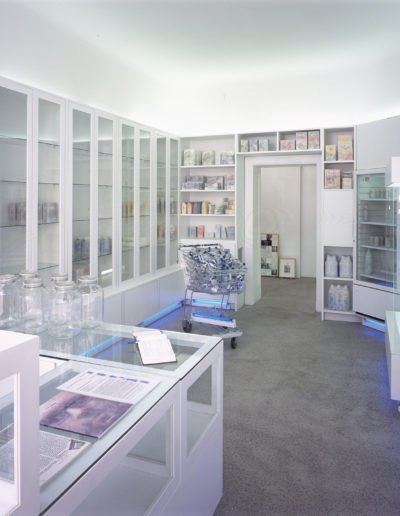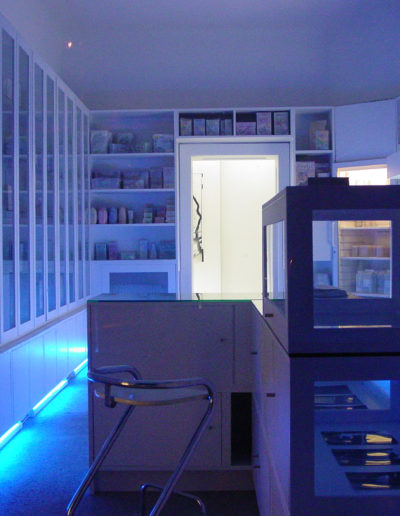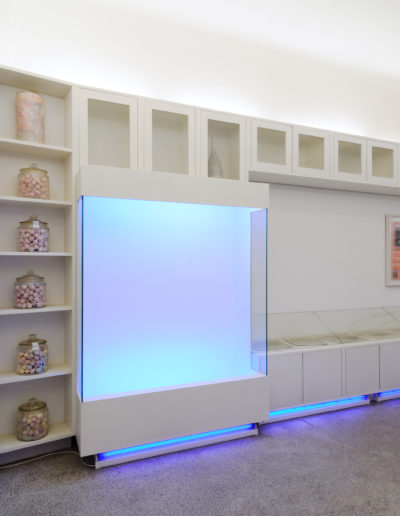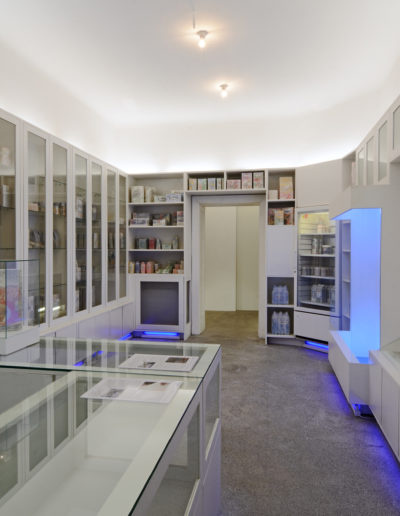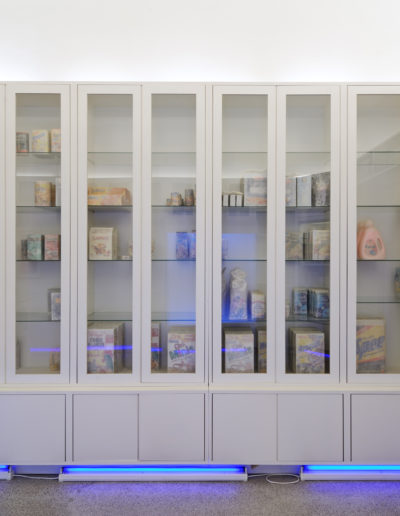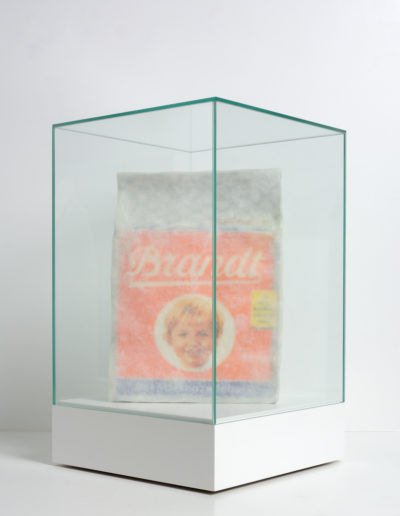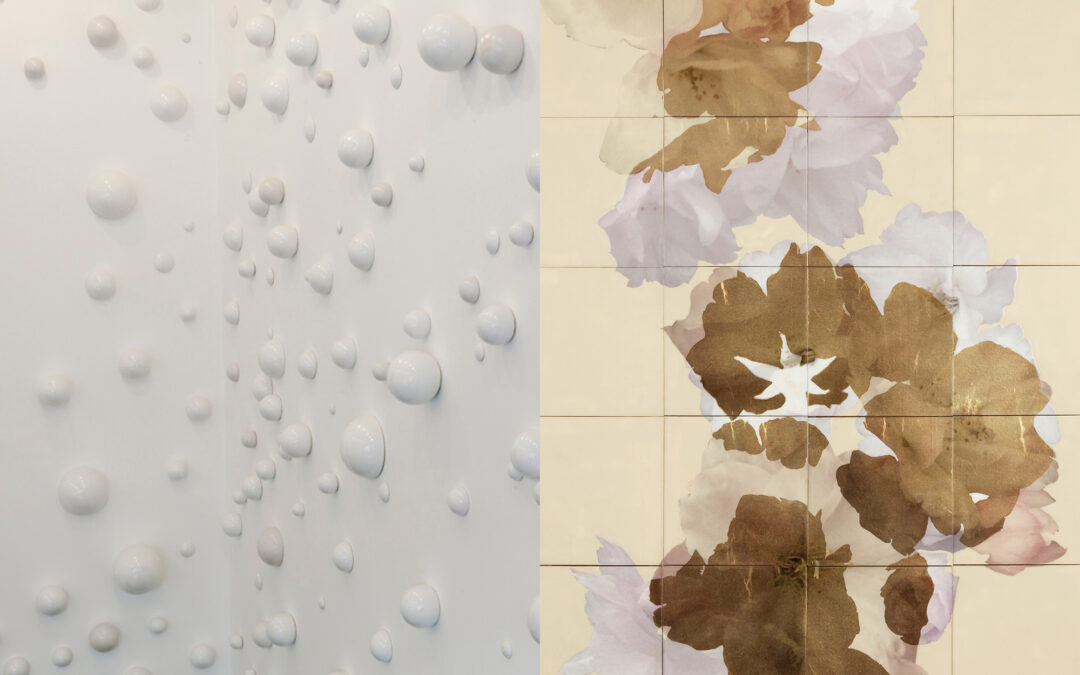
It happened tomorrow
It happened tomorrow Ute Essig + Henrik U. Müller 15. März – 14. AprilEröffnung: Donnerstag, 14. April, 19 – 21.30 Uhr Artist Talk (in German): Samstag, 23. März, 15 Uhr (R.S.V.P.) Portfolio Text (deutsch)Text (englisch) CV Ute EssigCV Henrik U. Müller
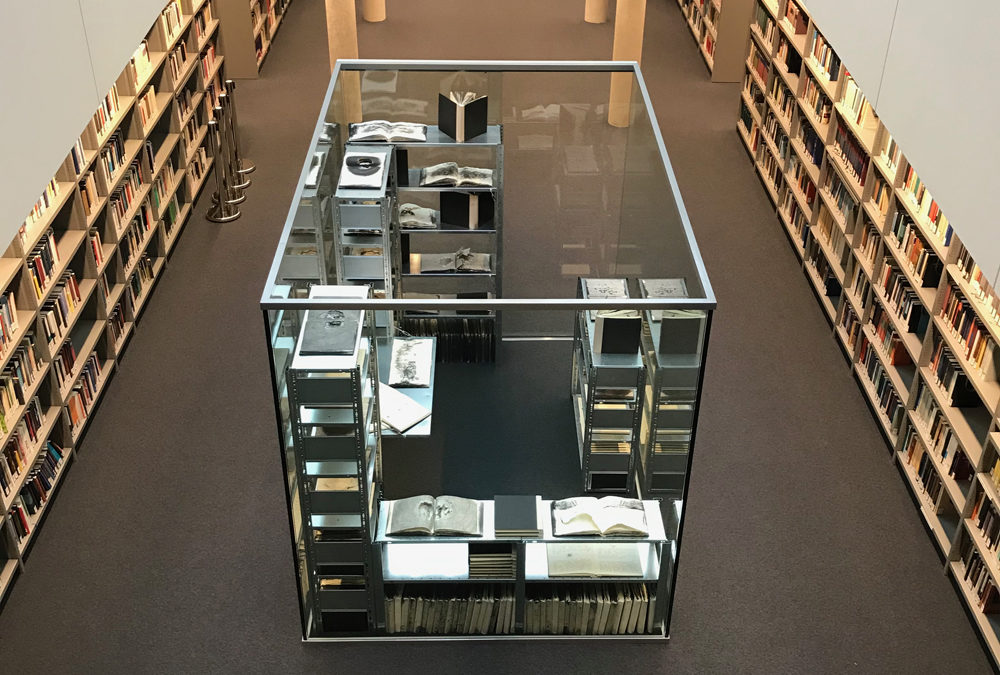
Li Silberberg – Bibliothek/Library
Bibliothek/LibraryDie Installationsskulptur »Bibliothek/Library« von Li Silberberg in der Philologischen Bibliothek der Freien Universität Berlin Einführung von Dr. Klaus Werner,Direktor a.D. der Philologischen Bibliothek der FU15. Juni 2022 (Text Galerie...
»KioskShop berlin (KSb)«
From December 2000 to spring 2010, Semjon H. N. Semjon's permanent work of art "KioskShop berlin (KSb)" in Berlin-Mitte uniquely linked the retail trade and the art world.
Since its opening in October 2001, several thousand visitors had visited the "KioskShop" by spring 2000. The level of awareness was increased by the "KioskShop goes" projects at various locations, such as in 2002 at the Art Forum Berlin (special stand) or in 2004 at the 1st Berlin Art Salon and Ku'damm 101 (hotel lobby), as well as Kulturkiosk Kanzler (Munich). This was followed by the 2nd Berlin Art Salon in 2005, the two-week participation on the MS Europa (EuropART) in 2006 and the appearance at the Kunsthaus Erfurt in 2007. In 2008 KioskShop presented itself at the Tease Art Fair Cologne and at Splendid Delicatessen (Berlin-Dorotheenstraße).
Detoured by another complex art installation, "Construction of Modern: The Berlin Collection Dr. Carl Theodor Gottlob Grouwet (1919)", "KioskShop" was virtually enclosed by walls representing the salon of the collection and used as the gallery's street salon for 10 years onwards after the gallery opening of Semjon Contemporary in September.
Resurrection
In October 2021, the walls were taken down to allow "KioskShop" to reappear as a whole. The looming termination of the gallery space after 10 and 21 years respectively by Berggruen Holding, which had in the meantime acquired the building, prompted Semjon to show his own work presumably here in Schröderstraße for a presumed last time after a 10-year artistic sabbatical. The future of this unique installation was uncertain. With the departure of the gallery, the "KioskShop" would have had to be broken up and probably destroyed.
The artwork was created for this place (in-situ). Among other things, the elastic floorboards were replaced by a vibration-free screed floor and the terrazzo floor was made by the artist himself, as well as the self-designed store furniture was built in the sculptor's workshop and screwed together on site to form a whole, filled and painted. A staircase relocation and the installation of a heating system without affecting the store architecture were also part of the process.For 10 years (actually 11), the artwork has been an integral part of the development of Schröderstrasse. The store unit was the 3rd leased in November 2000. In 2011, every store in the small and special Schröderstraße was filled with life.
On the one hand, the installation, which is designed to be permanent, simulates a small neighborhood store; on the other hand, the artwork plays with perceptions and triggers reflections on the world of goods and their distribution.
The total work of art (gesamtkunstwerk)
At the center of the walk-in artwork are countless "Product Sculptures." They are product packages reworked with bleached beeswax, mostly including their contents: Brandt Zwieback, Ariel detergent, Coca-Cola cans, newspapers and magazines, sweets and much more. Like in a store, they are serially arranged in store furniture designed and built for this purpose. The painterly white and alien-looking product sculptures, the minimalist design of the white furniture and the brightly lit space create distance and transcend the well-known store ambience into another level of perception and cognition. "As in front of a painting, distance is demanded from the viewer and curiosity is aroused at the same time" (Jan Maruhn in a text on "KioskShop" ca. 2001).
The design was to be an abstracting synthesis of perceptions from the memory of the long-forgotten colonial goods store to the post-war corner store run by the war widows and today's Späti store run predominantly by migrants. The installation was designed as a work-in-progress. Like a real store, new 'products' were constantly added, which could also be purchased. For this, Semjon had realized a presentation system that on the one hand physically protects the sensitive artwork, and at the same time generates its added value visually and metaphorically through the showcase character. Parallel to the main artwork, Semjon had set up a 'MultipleShop', which offered further, mostly edition objects or also series-produced "Product Paintings". At times also artworks by the intervention artists.
Das universell von allen Menschenvölkern seit ihrer Existenz genutzte Bienenwachs steht für mindestens zwei wichtige Impulse, die die Menschheit in ihrer Entwicklung nach vorne, zu dem heutigen homo sapiens, verholfen hat: Energie und Kommunikation. Die Möglichkeit, mit dem Bienenwachs durch das Kerzenlicht (generell: die Beherrschung des Feuers) den Tag in die Nacht zu verlängern, hat den Menschen verholfen, sich auf sich selbst zu besinnen und seine Zukunft (kreativ) zu gestalten, und nicht, wie bei allen anderen Lebewesen, den Einbruch der abendlichen Dunkelheit als Ruhezwang zu erleben (es sei denn, es sind nachtaktive Lebewesen). Gleichzeitig war das zu einem Brett geformte Bienenwachs ein Träger für die sich entwickelten Sprachen in Schrift- bzw. Zeichenform (vgl. die Überlieferung zumindest bei der griechisch/römischen Kulturen). Es ist geradezu grotesk, dass nun ausgerechnet jetzt der Mensch in seiner Profitgier die Grundlagen unseres Planeten rücksichtslos zerstört durch Vergiftung, Brandschatzung, Versiegelung, Wasserverschwendung und vieles mehr. Das weltweite Bienensterben (eigentlich allgemein: Insektensterben) raubt uns unsere Lebensgrundlage, und plötzlich wird das Bienenwachs ein rares und kostbares Naturprodukt. Dass Semjon das gebleichte Bienenwachs und nicht das naturgelbe bzw. braune Bienenwachs nutzt hat den Grund darin, dass das geklärte Wachs in Festform als ein metaphorisch aufgeladenen Weiß Reinheit und Ewigkeit implizieren kann, und visuell die darunterlegende Produktpackungsfarbe optisch nicht ‘verschmutzt’. Übrigens wohlwissend, dass der Bleichprozess nicht gerade umweltfreundlich ist, dafür aber beides vereint: Die Natur und die vom Menschen geschaffene Kultur, gegebenenfalls auch als Anti-Natur zu verstehen.
The aspect of energy and communication are not unimportant for the product sculpture and its representation space in the KioskShop (the predecessor project DeliGrocery baute ebenfalls auf diese Fundamente). Das ‘laute’ Design der Produktwelt, das einzelne Produkt im visuellen Wettbewerb mit anderen stehend, wird durch die semitransparente weiße Wachsschicht beruhigt und zugleich statuarisch erhöht. Gleichzeitig sind die eingearbeiteten rauchigen und wolkigen Strukturen eine malerische Verklärung des darunterlegenden. Malerei und Skulptur kommen kongenial zusammen. In der Wiederholung und der Inszenierung im Regal und der Verkaufsvitrine simuliert es den Marktalltag, verändert der genius loci das Kunstwerk konkret zur Ware.
The wax is bound energy capable of preserving the man-made product treated and refined with it. It is not for nothing that this natural material is used by the food, cosmetics, textile and pharmaceutical industries. At the same time, it refers to the preservation, conservation and protection and automatically witnesses the changing world of products and progress.
The fact that the KioskShop still has the same freshness and strength after its eleven-year slumber, perhaps even gaining more of it (time has moved on in those eleven years!) is amazing and may suggest what it will be like to still be on site a hundred years from now, or at least to be experienced in an architecturally recreated space in a museum.
Interventions
The series of interventions with guest artists was initiated by Semjon in 2003 to test whether it is possible to present 'foreign' artworks by other artists in a clearly pre-formulated exhibition context, such as "KioskShop", without suffocating them or creating arbitrary chaos. This concept was successful and until spring 2011 more than 30 so-called "interventions" with guests were carried out. This experience certainly led to the later founding of the Semjon Contemporary gallery.
In the fall of 2021, the tradition was resumed, not in a strict rhythm. The Intervention XXX-01 (has the Berlin artist Petra Toedter (27.8. -1.10.2021). Then followed so far Marlies von Soden (10.12.2022 -25.2.2023) and Ellinor Euler (22.4. -3.6.2023). Petra Tödter (27.8. – 1.10.2021). Danach folgten bisher Marlies von Soden (10.12.2022 –25.2.2023) und Ellinor Euler (22.4. –3.6..2023).
Funding
"KioskShop berlin" was financed by a subscription system supported by about 20 supporters. In addition, the artist was able to convince both the Capital City Cultural Fund and the Berlin Senate to provide substantial funding for the project. Last but not least, the sales of the "Product Sculptures" and the multiples and "Product Paintings" also contributed to the financing of the ambitious art project. Throughout the years, the "KSb" was open to the public daily from Tuesday to Saturday from 2 - 7 pm.
Future
Until May 30, 2027, KioskShop is protected by a new lease agreement. Whether the lease will actually end then certainly depends on several factors that cannot be foreseen at the moment. Qua contract is unfortunately so regulated.
If you would like to support the survival of the "KioskShop berlin" with networking, an article or a donation, please contact Semjon at office{at}semjoncontemporary.com
The site-specific artwork is something special in the Berlin, but also within the German and international art world, a total work of art that has not existed in this radicality before.
It is also unique that there is a walk-in gesamtkunstwerk that is now an integrative part of a gallery.
